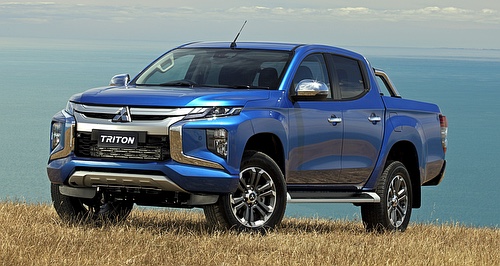Make / Model Search
News - Market Insight - Market Insight 2022LCV sales outclass cars, SUVsChips: LCVs generally use fewer semiconductors than cars and SUVs, helping make supplies less restricted. Better stock supplies, demand from delivery providers lifts Australia’s LCV segmentGallery Click to see larger images 26 Apr 2022 By NEIL DOWLING COMMERCIAL vehicles are lighting up the Australian automotive market with a 6.8 per cent sales increase during the first quarter and 4.0 per cent for the month of March alone.
The light commercial vehicle (LCV) market has outclassed the passenger car sector (down 9.7 per cent to March) and even SUVs (down 0.3 per cent to March).
It looks like there is a lot of demand for LCVs by a burgeoning trade and delivery sector but the increase has a lot more to do with vehicle availability.
Most LCVs have less engineering complexity and rely less heavily than SUVs and passenger cars on higher technology used for infotainment, safety and engine management.
This lower complexity means LCVs generally have fewer semiconductors – the bane of current production and the biggest single bugbear slowing new-vehicle deliveries.
In the first quarter of 2022, the Australian LCV market sold 64,162 units, with 75 per cent of that market taken by 4x4 utes and cab-chassis models.
The remaining categories were the 4x2 utes and cab-chassis (13 per cent), vans (10.4 per cent), and buses (1.6 per cent).
In the 4x4 ute segment, the biggest winner was no surprise – Toyota – with HiLux sales up 1.7 per cent on the first quarter of 2021 despite difficulties getting new-vehicle stock because of production slowdowns and component shortages. Its share of the segment was 22.9 per cent.
Mitsubishi’s Triton scored well in the 2022 first quarter, up 72.7 per cent on the same period of 2021 with 9511 sales and a market share of 19.7 per cent, while the Ford Ranger – unusually down the ladder a bit – posted a sales downturn of 2.1 per cent on 2021 with 8925 sales.
The Isuzu D-Max and Mazda BT-50 pair were both up for the quarter on solid supply, with the Isuzu selling 4733 units in the period, up 17.3 per cent on 2021, and Mazda up 15.6 per cent with 3563 sales.
While the utes dominated the LCV segment, there were strong gains for certain models in the bus and van categories.
In the list of buses with fewer than 20 seats, no surprise that Toyota’s HiAce helped push the sector to a 44.5 per cent increase over the first quarter of 2021.
It sold 871 units in the three months for an 87.1 per cent share of the sector. Of that, 202 were sold in WA, with the bulk going to mining companies.
Toyota is the single entrant in the segment of buses with more than 20 seats as its Coaster sold 47 units, a slip of 7.8 per cent on 2021.
The van category’s small (under 2.5 tonne GVM) sector showed a 27.6 per cent increase on Q3 2021 on strength based on demand for urban delivery vehicles. It was dominated by the Renault Kangoo (57.3 per cent of sales).
But the bigger vans (2.5 tonne to 3.5 tonne GVM) were a bit sluggish with a slip of 9.8 per cent on 2021.
There were 5951 of these bigger vans sold in the first quarter, with the sales leader being the Toyota HiAce with 2596 sold, representing 43.6 per cent slice, well up on its 36.1 per cent share of 2021.  |
Click to shareMarket Insight articlesResearch Market Insight Motor industry news |










Facebook Twitter Instagram